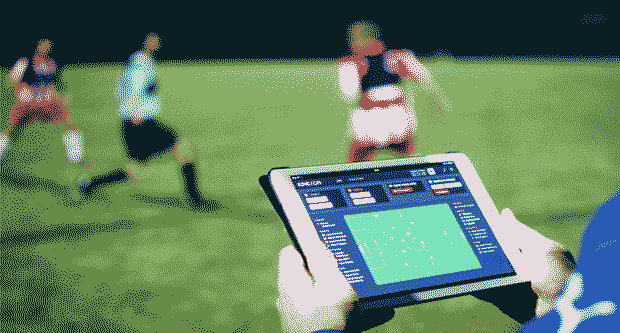Question: What are the innovations and evolving technologies in the field of adaptive sports?
Adaptive sports have undergone significant transformations over the past few decades, thanks to continuous advancements in technology and equipment. These innovations have empowered athletes with disabilities to compete at high levels, breaking barriers and redefining what is possible in the realm of sports. This article explores the latest advancements in adaptive sports technology and how they are enabling athletes with disabilities to achieve peak performance.
The Evolution of Adaptive Sports
Adaptive sports, also known as para-sports, provide opportunities for individuals with disabilities to engage in competitive and recreational activities. Historically, these sports were limited by the availability of suitable equipment and technologies. However, with the advent of new materials, engineering techniques, and digital technologies, adaptive sports have seen unprecedented growth and development.
Cutting-Edge Prosthetics and Orthotics
Advanced Prosthetics
Prosthetic technology has seen remarkable advancements, providing athletes with greater mobility and functionality. Modern prosthetics are designed with lightweight, durable materials such as carbon fiber, which offer superior strength and flexibility.
Key Innovations:
- Bionic Limbs: These advanced prosthetics are equipped with sensors and microprocessors that mimic natural limb movement. Athletes can control bionic limbs using muscle signals, allowing for precise and natural movements.
- Customized Fit: Advanced scanning and 3D printing technologies enable the creation of prosthetics that fit perfectly to an individual’s anatomy, enhancing comfort and performance.
- Adaptive Feedback Systems: Some prosthetics come with feedback systems that provide real-time data on pressure and alignment, helping athletes make necessary adjustments for optimal performance.
Orthotic Devices
Orthotics are devices used to support and enhance the function of limbs. Recent innovations have made these devices more effective and accessible.
Key Innovations:
- Exoskeletons: Wearable robotic suits, or exoskeletons, support and augment human movement. They are particularly beneficial for athletes with spinal cord injuries, allowing them to walk, run, and perform complex movements.
- Smart Orthotics: Equipped with sensors and actuators, smart orthotics provide real-time adjustments to improve mobility and reduce the risk of injury.
- Lightweight Materials: The use of advanced materials such as titanium and carbon fiber has made orthotic devices lighter and more durable, enhancing comfort and performance.
Adaptive Equipment for Various Sports
Wheelchair Sports
Wheelchairs designed for sports are vastly different from everyday wheelchairs. They are customized to meet the specific needs of various sports, such as basketball, tennis, and racing.
Key Innovations:
- Sport-Specific Designs: Each sport requires unique wheelchair configurations. For example, basketball wheelchairs have a lower backrest and a wider wheelbase for stability, while racing wheelchairs are aerodynamically designed for speed.
- Adjustable Features: Modern sports wheelchairs come with adjustable components that can be fine-tuned for optimal performance, including seat height, camber, and axle position.
- Lightweight Frames: Using materials like aluminum and carbon fiber, manufacturers have created lighter and stronger wheelchair frames, enhancing agility and speed.
Adaptive Cycling
Adaptive cycling has opened up new avenues for athletes with disabilities, allowing them to participate in various forms of cycling, including road racing, mountain biking, and handcycling.
Key Innovations:
- Handcycles: These are specially designed cycles powered by the rider’s arms instead of legs. They come in various configurations, including upright, recumbent, and kneeling positions, to accommodate different needs and preferences.
- E-Bikes: Electric bikes, or e-bikes, provide additional power assistance, making it easier for athletes with lower limb impairments to cycle over long distances and challenging terrains.
- Custom Fittings: Adaptive cycles are often customized to fit the rider’s specific body measurements and requirements, ensuring comfort and efficiency.
Adaptive Swimming
Swimming is a popular sport among athletes with disabilities, thanks to the weightlessness and freedom of movement it offers.
Key Innovations:
- Swim Prosthetics: Specialized prosthetic limbs designed for swimming provide better buoyancy and propulsion, helping athletes move more efficiently in the water.
- Swim Aids: Devices such as floatation belts, kickboards, and specialized swim fins assist athletes in maintaining proper form and enhancing their performance.
- Accessible Pools: Innovations in pool design, including zero-entry pools and accessible pool lifts, ensure that athletes with disabilities can enter and exit the water safely and easily.
Adaptive Skiing
Skiing has become increasingly accessible to athletes with disabilities, thanks to a range of adaptive equipment.
Key Innovations:
- Sit-Skis: These devices allow athletes with lower limb impairments to sit on a specially designed ski while using outriggers for balance and steering.
- Mono-Skis and Bi-Skis: Mono-skis have a single ski and a bucket seat, while bi-skis have two skis for added stability. Both types are equipped with shock absorbers and suspension systems for smoother rides.
- Adaptive Poles: Poles with specialized grips and attachments help athletes maintain balance and control while skiing.
Technological Innovations
Wearable Technology
Wearable technology has revolutionized adaptive sports by providing athletes with real-time data and feedback.
Key Innovations:
- Fitness Trackers: Devices that monitor heart rate, steps, and other vital statistics help athletes track their performance and make necessary adjustments.
- Smart Clothing: Embedded with sensors, smart clothing provides insights into muscle activity, movement patterns, and posture, aiding in performance optimization.
- Augmented Reality (AR): AR goggles and headsets offer immersive training experiences, allowing athletes to visualize their movements and make corrections in real time.
Virtual Reality (VR)
Virtual reality has become a valuable training tool for athletes with disabilities, providing a safe and controlled environment to practice and refine their skills.
Key Innovations:
- Simulated Training: VR environments simulate real-world scenarios, helping athletes practice and perfect their techniques without physical risk.
- Rehabilitation: VR is used in rehabilitation programs to help athletes recover from injuries, offering interactive exercises that promote physical and cognitive healing.
- Performance Analysis: VR systems analyze an athlete’s performance in detail, providing actionable insights to enhance training and competition strategies.
Communication and Coaching Tools
Technological advancements have also improved communication and coaching in adaptive sports.
Key Innovations:
- Remote Coaching: Video conferencing and live streaming enable coaches to provide real-time feedback and guidance to athletes, regardless of their location.
- Performance Analytics: Advanced software analyzes performance data, helping coaches and athletes develop tailored training programs.
- Assistive Communication Devices: For athletes with speech impairments, devices that convert text to speech or use alternative communication methods ensure effective communication with coaches and teammates.
The Future of Adaptive Sports Technology
The future of adaptive sports technology holds exciting possibilities. Continued research and development in materials science, robotics, and artificial intelligence promise to bring even more sophisticated and effective solutions for athletes with disabilities. As these technologies evolve, they will further level the playing field, allowing athletes of all abilities to compete at the highest levels and achieve their full potential.
Inclusivity and Accessibility
As technology continues to advance, it is crucial to ensure that adaptive sports equipment and innovations are accessible to all athletes, regardless of their financial means. Efforts to make these technologies affordable and widely available will play a key role in promoting inclusivity in sports.
Collaborative Efforts
Collaboration between engineers, designers, healthcare professionals, and athletes will drive the future of adaptive sports technology. By working together, these stakeholders can create innovative solutions that meet the unique needs of athletes with disabilities and push the boundaries of what is possible in adaptive sports.
Conclusion
Adaptive sports technology has revolutionized the way athletes with disabilities train, compete, and excel in their chosen sports. From advanced prosthetics and orthotics to specialized equipment for various sports, these innovations have empowered athletes to achieve peak performance and redefine the limits of their abilities. As technology continues to advance, the future of adaptive sports looks bright, promising even greater inclusivity, accessibility, and excellence for athletes with disabilities.



